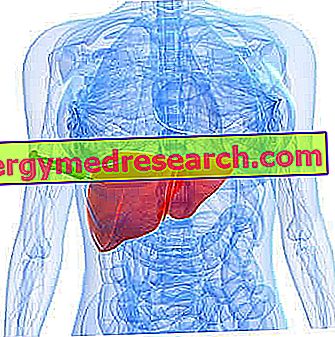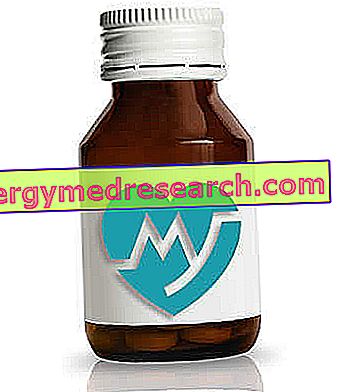
Conjugated vaccine (adsorbed) against diphtheria, tetanus, pertussis (acellular component), hepatitis B (rDNA), poliomyelitis (inactivated) and Haemophilus influenzae type b
What is Vaxiles and what is Vaxiles used for?
Vaxelis is a vaccine containing active substances derived from diphtheria, tetanus, pertussis and Haemophilus influenzae type b bacteria, hepatitis B virus and inactivated polioviruses. It is used in infants and young children over the age of six weeks to protect them from the following infectious diseases:
- diphtheria (a highly contagious disease that affects the throat and skin and can cause damage to the heart and other organs);
- tetanus (trismus, normally caused by the infection of a wound);
- whooping cough (whooping cough);
- hepatitis B (a viral infection of the liver);
- poliomyelitis (polio, a disease that affects the nervous system and can lead to muscle weakness or paralysis);
- invasive diseases (such as pneumonia and meningitis) caused by the bacterium H. influenzae type b (Hib).
How is Vaxiles - Vaccine used?
Vaxelis is available as a suspension for injection in pre-filled syringes. The medicine can only be obtained with a prescription. Vaxelis vaccination must be carried out in accordance with official recommendations.
The recommended initial vaccination program consists of two or three doses, given at least one month apart, for newborns over six weeks of age. A booster dose should be performed at least six months after the last starting dose. For the booster dose, both Vaxelis and an appropriate combination of other vaccines can be used. Vaxelis is given by intramuscular injection, usually in the upper thigh or shoulder.
For more information, see the summary of product characteristics (included with EPAR)
How does Vaxiles - Vaccine work?
Vaxelis is a vaccine. Vaccines act by "teaching" the immune system (the body's natural defenses) to defend itself against disease. Vaxelis contains small amounts of materials derived from the viruses and bacteria against which it gives protection.
When a child is vaccinated, the immune system recognizes the parts of bacteria and viruses as "foreign" and produces the related antibodies. Subsequently, if the person naturally comes into contact with bacteria or viruses, his immune system will be able to produce antibodies rapidly. This will help the body protect itself against diseases caused by these bacteria and viruses.
The vaccine is "adsorbed" on aluminum compounds. This means that some of the active ingredients are fixed on tiny particles of aluminum compounds, increasing the ability to produce antibodies.
What benefits of Vaxiles - Vaccine have been shown in studies?
Vaxelis has been studied in two main studies, involving more than 2, 500 newborns and small children over six weeks of age, who received two or three doses of the vaccine during the first six months of life. Subsequently, they received a booster dose shortly after they were one year old. The effects of Vaxelis were compared with those of another vaccine, Infanrix hexa, formulated to provide protection against the same six Vaxelis diseases. In these studies, children were also given other vaccines, in compliance with local vaccination schedules, to protect them from other childhood diseases such as rotavirus gastroenteritis, measles, mumps, rubella and chicken pox. The main efficacy parameter was the production of antibody levels which confer a known protection against infections caused by diphtheria, tetanus, poliomyelitis, hepatitis B and H. influenzae type b and an expected protection against pertussis.
Both studies showed that Vaxelis produced satisfactory antibody levels to provide protection against all six diseases in 90% -100% of children who completed the Vaxelis vaccination program.
What are the risks associated with Vaxiles - Vaccine?
The most common side effects of Vaxelis are pain, swelling and redness at the injection site, irritability, crying, drowsiness, fever, reduced appetite and vomiting. For the full list of all side effects reported with Vaxelis, see the package leaflet.
Vaxelis must not be used in children who have had an allergic reaction to Vaxelis or a vaccine containing the same components, including substances used during the manufacture of the vaccine and which could be present in extremely low concentrations (such as neomycin and streptomycin antibiotics). Vaxelis should not be used in children who have experienced encephalopathy (brain disease) of unknown origin within seven days of receiving a vaccine containing pertussis components. It must not be used in children with severe or uncontrolled disorders of the brain or nervous system, such as uncontrolled epilepsy (seizure), unless the condition has stabilized by treatment and the benefit of the vaccination is clearly greater than the risk. For the full list of limitations, see the package leaflet.
Why has Vaxiles - Vaccine been approved?
The Agency's Committee for Medicinal Products for Human Use (CHMP) decided that Vaxelis's benefits are greater than its risks and recommended that it be approved for use in the EU. The Committee considered that Vaxelis has been shown to produce satisfactory protective antibody levels against diphtheria, tetanus, pertussis, hepatitis B virus, poliovirus and H. influenzae type b. Previously, such levels of antibodies have been shown to confer protection against these diseases. Regarding safety, the CHMP considered that, overall, the profile of this vaccine is similar to that of other vaccines.
What measures are being taken to ensure the safe and effective use of Vaxiles - Vaccine?
A risk management plan has been developed to ensure that Vaxelis is used as safely as possible. Based on this plan, safety information has been included in the summary of product characteristics and the package leaflet for Vaxelis, including the appropriate precautions to be followed by healthcare professionals and patients. Further information is available in the summary of the risk management plan.
More information on Vaxiles - Vaccine
For more information about Vaxelis therapy, read the package leaflet (also part of the EPAR) or contact your doctor or pharmacist.



